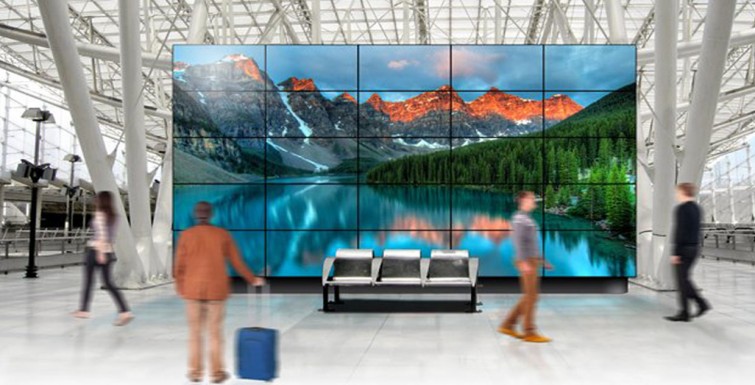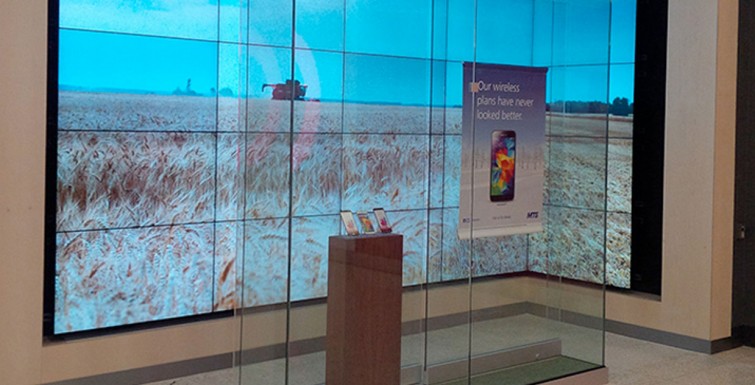The following article has been re-posted from displaydaily.com
NEC Display Solutions of America, a leading provider of commercial-grade digital signage displays and projectors, announced its new 46” and 49” UN Series displays designed to make installing and managing video walls easier than ever through commercial-grade features such as color control, easy content distribution, and enhanced software capabilities.
Backed by NEC Display’s known quality and expertise in the video wall market, the new 46” UN462A and UN462VA are designed for digital signage applications and feature professional-grade panels with high-haze, anti-glare panel technology, FHD resolution and uniformity control across the entire digital canvas thanks to its rigorous factory self-calibration. The 46” display sports an ultra-narrow cabinet with a 3.5mm bezel gap. Meanwhile, the 49” UN492S and UN492VS adds an S-IPS panel with an ultra-narrow cabinet featuring a bezel gap of 1.8mm, ideal for corporate, cinema, house of worship, and retail signage customers.
“With our new UN Series video wall displays, we’re elevating our customers’ video wall capabilities by enhancing ease of use and delivering the commercial-grade quality and features that NEC is known for,” said Ben Hardy, Senior Product Manager at NEC Display Solutions. “Each display is calibrated to produce a uniform image out of the box, and we’ve maintained a high-haze panel, enhanced our daisy chain functionality, and future-proofed the connectivity options by adding a DisplayPort and HDMI out connection.”
The 46” and 49” UN Series displays feature improved color management with the addition of NEC’s proprietary SpectraView Engine that allows for self-calibration by connecting a sensor directly to the display, as well as making significant adjustments via the on-screen display. In addition, the UN Series feature improved NDWC capabilities with corner adjustment and uniformity correction and quicker recalibration techniques. The displays also include both DisplayPort and HDMI out connections to daisy chain signals from the internal media player for easy video wall installation and management. Meanwhile, the new TileCut function ensures the image does not get cut off when displaying content on non-16:9 video walls – a must for customers who need to ensure their content is always properly displayed.
“We’ve designed our new UN Series video wall displays to directly address the needs of customers who need video walls for digital signage, presentation, entertainment, or informational applications,” Hardy said. “With an anti-glare panel and accurate color reproduction, the UN Series offers close-viewing ability, presenting a cost-efficient indoor video wall option in addition to direct view LED panels.”
The UN Series’ impressive commercial-grade feature set is rounded out with a full steel chassis, faster processing times, and TileMatrix functionality for complete control over image adjustments on the wall.
Among other key benefits of each display:
- Full commercial build with steel chassis, commercial-grade cooling fans and temperature sensor with self-diagnostics for 24/7 operation
- Brightness up to 700 cd/m2
- Raspberry Pi and OPS/Expansion slots for added content management capability
- Direct LED-backlighting, translating to improved brightness uniformity, reduced power consumption and mercury-free components
- Auto ID, Auto IP Address and Auto TileMatrix, which ease the time necessary to set up control and image properties across the video walls
- FrameComp, which compensates for content lag in larger video walls with horizontal moving objects
- Expanded daisy chain options with DisplayPort 1.2 and HDMI Out, which enables 4K UHD resolution pass through and TileMatrix capabilities across entire wall
- NaViSet Administrator 2 software compatible, which allows asset management capabilities of the products as well as full control and task management
- Uniformity calibration of each display for gamma, intensity, and RGB for color consistency from display to display
Contact us at sales@visionone.com.au for more information.






